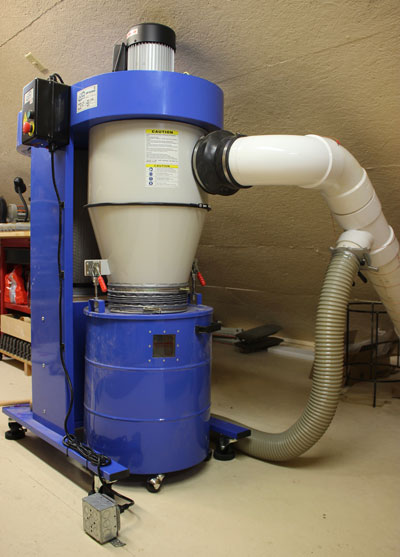
 by Steven D. Johnson
by Steven D. Johnson
Racine, Wisconsin
This month:
•
Shop Rejuvenation
•
Wood Movement – An Easy Way To Predict
•
Sixty Years, Sixty Seconds
A Little Shop "Rejuvenation"
Click on any picture to see a larger version.
It's good to be back. Intentions were to take one month off from this column and from making videos… a month to get some non–woodworking projects done. It didn't quite work out that way, though. One month turned to two, the projects didn't get done, but hey… life happens.
Oh, I did get a few small things done. You may have seen in the background of some of my recent videos that I had some mold growing along the lower part of the block wall on the north side of my shop. That wall is 3–1/2 feet below ground that drained poorly, and the concrete block was never sealed on the outside. A few hours of sweat and shoveling outside and some miraculous mold killer inside, a fresh coat of Drylok Masonry Waterproofer, and hopefully the mold is gone… for good.
With a few snatched moments here and there I also put a fresh coat of "Porch and Floor" paint on my shop floor. Section by section, I moved equipment, cleaned the floor, and repainted. It is so much brighter now.
I also arranged a little additional space in my shop. I turned my dust collector 90–degrees and added a port upstairs with a blast gate. Originally I had worried that adding an additional elbow to the dust collection ductwork might reduce the airflow, but the machine is so powerful it has had no deleterious effect. In fact, in some respects, the unit is working a little better now with that slight bit more airflow resistance. Turning the dust collector has also given me a clear line of sight to both windows at either end of the room.

|
Figure 3 – An elbow and a reducing tee allowed
me to turn my dust collector 90–degrees and gave
me a dust port upstairs for sanding machinery
I use infrequently
|
I moved my
mobile sanding center
, combination belt/disc sander, oscillating spindle sander, and related equipment and supplies upstairs. The additional space downstairs for the equipment I use every day is welcome, and when I occasionally need to use the sanding equipment, it is not too far or too many steps away. I think it will work out better, especially when I am working on big projects like the two bookshelves I am building now. These bookshelves, by the way, are the subject of my next
video series
. Check it out now!
As a refresher,
in my last column
we started looking at wood movement and I promised to give you a new method to predict how a board might warp, twist, or otherwise do something nasty that could cause problems in a project, so let's jump right back into this…
(Page 1 of 3)
1
2
3
Next Page
Return to
Wood News
front page
